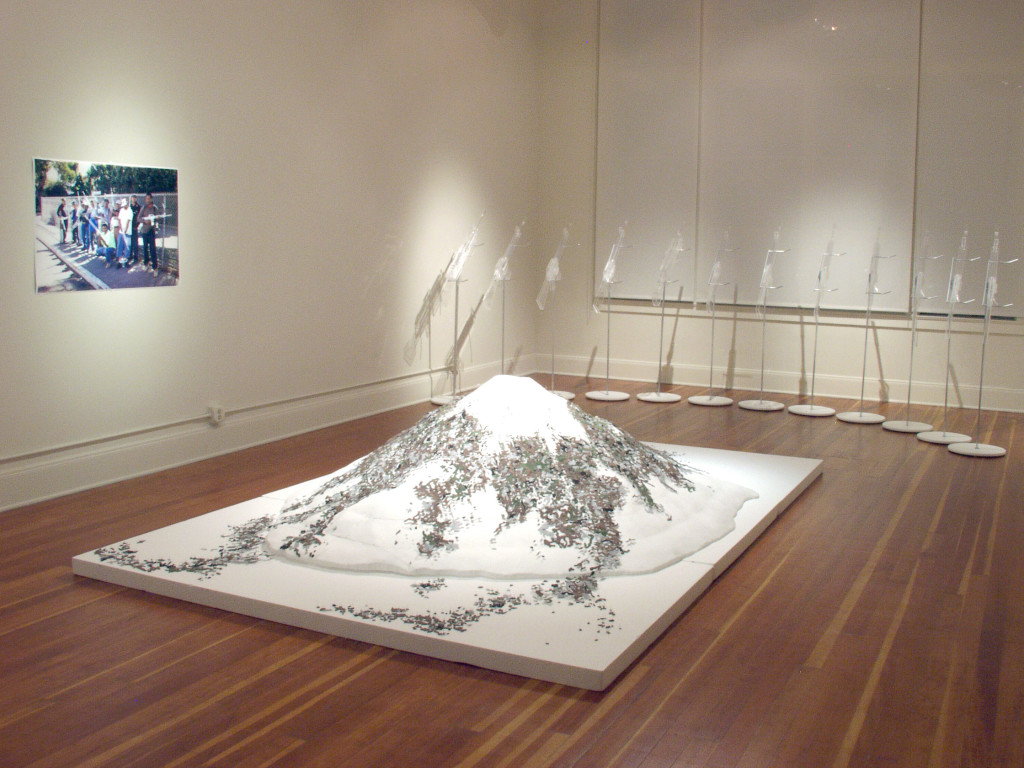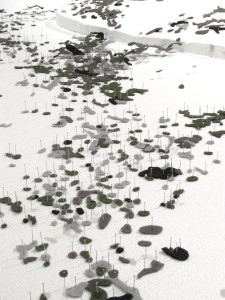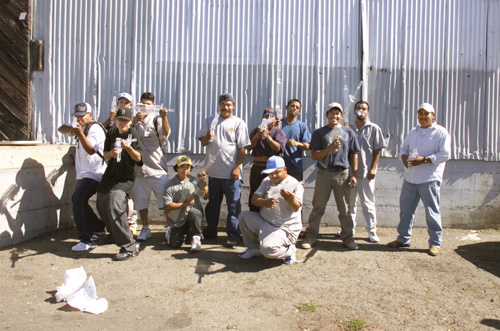For her contribution to this show’s exploration of violence, group formation, and national identity, Mayumi Hamanaka built a 12’ x 8’ x 3’ replica of Mount Fuji and decorated it with green, brown, and grey pieces of felt cut from the pattern of the Japanese army’s camouflage uniform. While the colors of the camouflage resembled the rocks and trees of the landscape, the pieces of felt also had been pinned to the mountain approximately in shape of soldiers’ torsos, provoking consideration of the relationship between landscape, militarism, and the sense of both national identity. Hamanaka constructed the piece in response to the mobilization of the Japanese army for its first foreign combat since WWII in Iraq.
The work raised questions about the significance of Japan’s involvement in the war as an instrument of American interests, along with inviting consideration of unresolved legacies of Japanese imperialism in the first half of the twentieth-century. The intimacy between the landscape and the figures in Hamanaka’s piece recalled racist mythologies from both Asia and Europe of authentic national identities rooted in blood and soil. And, in its diminished scale, Hamanaka presented Mount Fuji as a national symbol verging on kitsch.
Taro Hattori, in turn, constructed twelve plastic machine guns (M-16s and M-249s), and hired day-laborers to pose with them for photographs. While capturing the guns’ stylistic sex appeal, the plastic transparency of Hattori’s sculptures simultaneously subverted their power, presenting the authority of brute force in its emptiness. By hiring his models, Hattori mimicked the growing importance of mercenaries in modern warfare, and the constitution of the American military in particular as a ‘volunteer’ army comprised largely of poor and working-class people without many viable alternatives. At the same time, as a group of twelve, Hattori’s models bore a connection to America’s jury system, giving a more ambivalent significance to the formation of groups than his critique of violence might otherwise suggest. Uniformly armed, Hattori’s subjects appeared to be united in a common purpose: to fight the “enemy,” to pass judgment, or simply to have their picture taken. But he did not instruct his models how to pose, and they did not stand in formation. As a group, they were not internally cohesive, which both helped to explain the need for an excluded ‘other’ to hold groups together, and presented a critical vantage from which to challenge their force.



